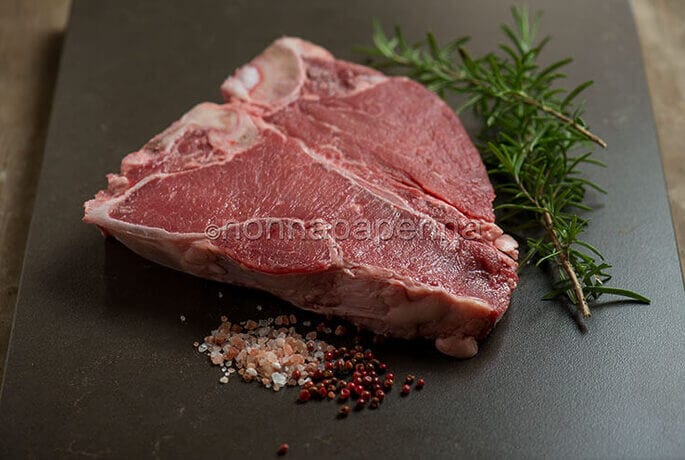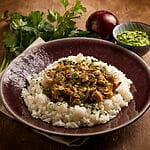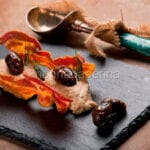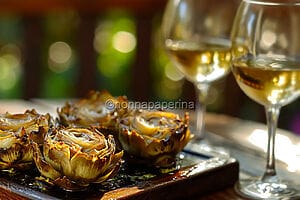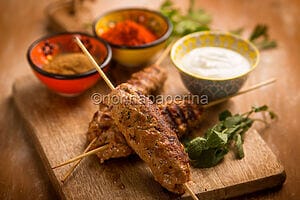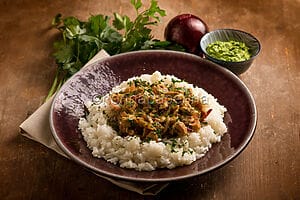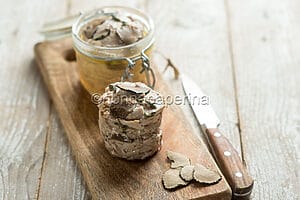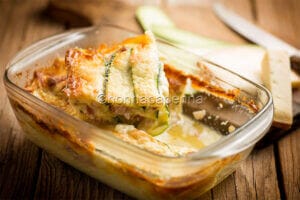
Fiorentina steak: the secrets to cooking it properly
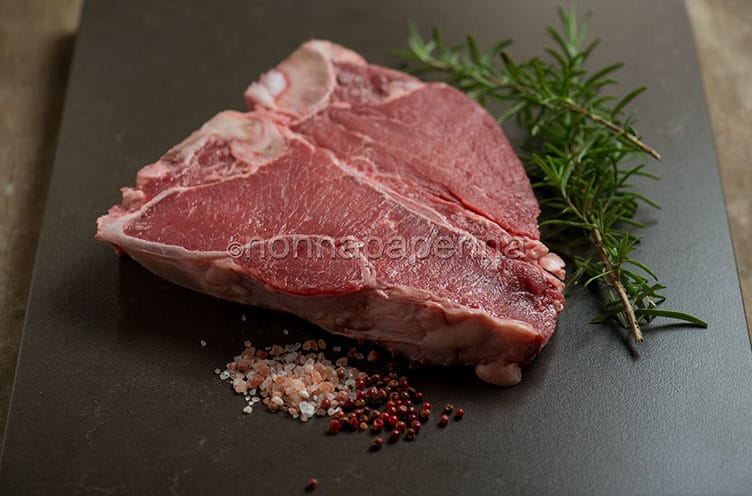
Today we’ll talk about a dish well known in Italy and abroad that’s a representation of the regional culinary technique: the Fiorentina steak. Although the preparation seems straightforward, there are several unintended traps. First and foremost, due to the specific meat cut. The original Fiorentina steak is made from the loin, which must include bone, fillet, and sirloin. It should be huge, about 4 cm thick, and weigh at least 1 kg. Obviously, when cooking a Fiorentina steak, you’re cooking for at least three people. As good as it may be, gobbling up a kilo of meat is quite dangerous. How do you cook Fiorentina steak? Given the massive chunk, the cooking method is necessarily the grill, which must be red-hot. But how do you grill a terrific Fiorentina steak?
Recipe Fiorentina steak
Preparation Fiorentina steak
Preparing Fiorentina steak. How do you cook the Fiorentina steak? The first step to enjoying a good Fiorentina steak is choosing the proper raw material. It should be well tenderized and copiously marbled, and its thickness should never be less than 4 cm. Another recommendation is to process the meat only when it is at room temperature, so avoid using meat that has just been pulled from the refrigerator. If the meat is stored in a fridge, you need to take it out two hours prior to processing. Then pat it with a paper towel to remove the moisture. You can then continue processing it after that.
Place the steak on a baking pan lined with paper towels.
Once the grill has heated up and you can see some ash, carefully place the meat on it. Don’t flip it just yet, but keep an eye on it. Depending on the thickness of the steak, flip it after 3-5 minutes and cook the opposite side for the same amount of time. Never take it with a fork; always grasp it by the bone. You run the danger of buckling it and spilling all the juice.
If the steak is really thick, you can even cook it vertically (on the bone’s side) for 1-2 minutes. When you’re done with the cooking, place the steak on a cutting board so that the internal juice doesn’t drain. Now season the meat with extra-virgin olive oil, some freshly ground pepper (timut pepper or pink pepper berries), some Maldon salt (or Himalayan pink salt), and serve.
Cooking the Fiorentina steak. Finally, I’ll remind you to purchase a food thermometer in order to cook a Fiorentina to perfection. A medium-rare Fiorentina should be cooked at a temperature between 52 and 55 degrees, while a rare Fiorentina should be cooked at 48 degrees. You can cook the steak longer if you prefer a well-done steak, but never above 60 to 65 degrees.
Fiorentina steak is to be served hot.
Ingredients Fiorentina steak
- 1 Fiorentina steak with bone
- extra-virgin olive oil q. b.
- smoked Maldon salt or pink Himalayan salt q. b.
- timut pepper or pink pepper berries.
Fiorentina steak, a delectable second course
A rare steak is recommended (if you like it) because it releases delicious juice after every cut. Cooking shouldn’t last longer than 10 minutes, but obviously, it depends on its thickness. Fiorentina steak is a dish with a strong emotional bond to the area and is also a cultural phenomenon. Therefore, it is not surprising that there are many legends centered around it. The most bizarre doesn’t discuss the Fiorentina steak’s history at all, but rather the name “bistecca,” which is an Italian term for any thick piece of grilled meat. The story goes that in the late 16th century, some English noblemen arrived in Florence. After trying the original Fiorentina at a local inn, they showed great signs of appreciation and started screaming “beef steak” hence the term “bistecca”.
Possible mistakes when cooking the Fiorentina steak
Fiorentina steak is safeguarded by a dense layer of custom and unwritten restrictions, even though there are no explicit laws governing it. These keep you from making costly errors that occasionally ruin the meat and render it inedible. The worst error, which is very frequently made, occurs when the steak is turned over. In fact, if you use a regular carving fork, the juice seeps, leaving the meat tasteless and difficult to swallow. Because of this, you must remove the steak from the bone with your hands. In any case, it’s a pretty comfortable approach if you’re careful.
Another mistake concerns the cooking time. Beginners are thrown off by the light pink colour, which could suggest the meat is still raw. The steak is actually supposed to be eaten rare, and it’s so juicy and delicious that it will persuade even lovers of well-done steaks at first bite.

Salt and pepper, a small deviation from the original
How do you prepare Fiorentina steak? The recipe for Fiorentina steak that I’ll share with you today respects the tradition, however, I made two small variations, not in regards to the meat but rather the seasoning. Oil, salt and pepper should never be missing. The oil should be extra-virgin olive oil, while with the salt, and pepper, you can experiment a little. I suggest Maldon salt, which is smoked with oak wood and gives it a tint of dried fruits without interfering with the intense flavour of the Fiorentina steak.
Use pink Himalayan salt instead, which has a lot more fragrance and is raw. In terms of pepper, I advise Timut pepper because it adds lemony undertones that improve the meat while still “respecting” it. Pink pepper could also be used; it’s more accessible and has fruity undertones.
Fiorentina steak nutritional facts
One more topic is left to clarify: does the Fiorentina steak make you fat? The answer is yes, for two reasons. First of all, because you eat a lot. The average serving size is 300g per person, and in some cases we cook for just two people. Secondly, the beef being utilized is hardly the leanest. It is beef, specifically pure-bred Chianina veal with a lot of marbling.
As a result, the fat content is 30% above average. Fortunately, there is no shortage of the superior nutrients found in red meat. This sort of meat contains 20% of the recommended daily allowance of protein as well as B vitamins and minerals. Of course, there is a lot of iron there, and it is in a form that the body can easily absorb.
The perfect side dish for a Fiorentina steak is baked potatoes or some fresh salad.
COULD IT BE INTERESTING FOR YOU

Roman-Jewish fried artichokes, a traditional Roman dish
Origins and curiosities of Roman-Jewish fried artichokes Roman-Jewish fried artichokes are one of the most famous and delicious dishes in Roman cuisine. Their origin dates back to the 16th century,...
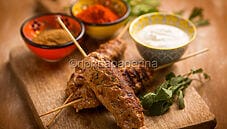
Kofte, spicy, and light meatballs from Turkey
What to know about lamb meat The true distinction between kofte and our meatballs, at least in terms of flavour, is the kind of minced meat that is used. Instead of using pork in this recipe, which...
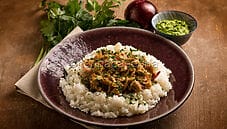
Chicken Yassa, a spicy and tasty Senegalese dish
Discovering Yassa chicken Yassa is a Senegalese dish made with chicken and rice, a complete dish that is appreciated for the variety of flavours and the massive use of spices. The recipe is...










